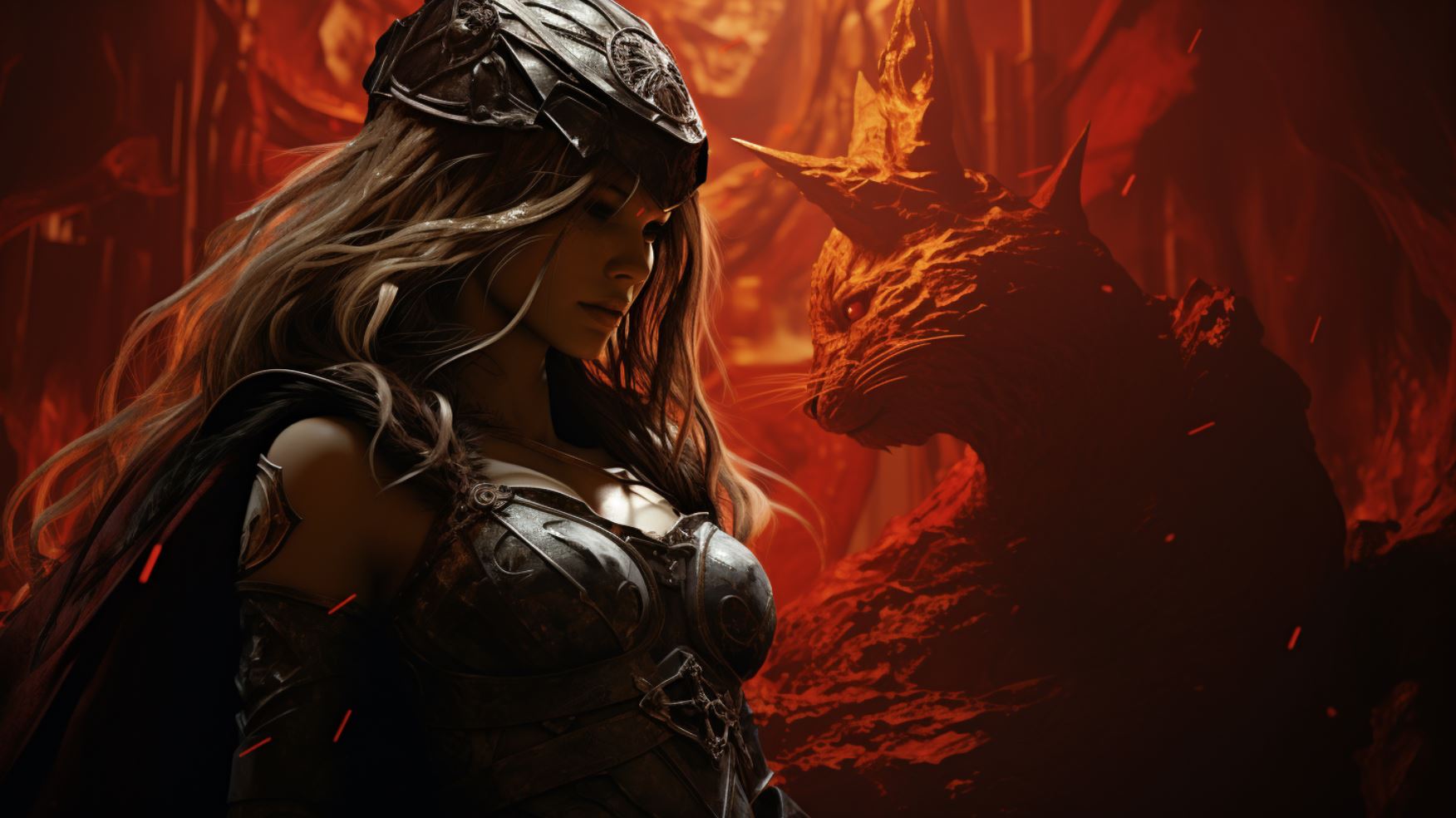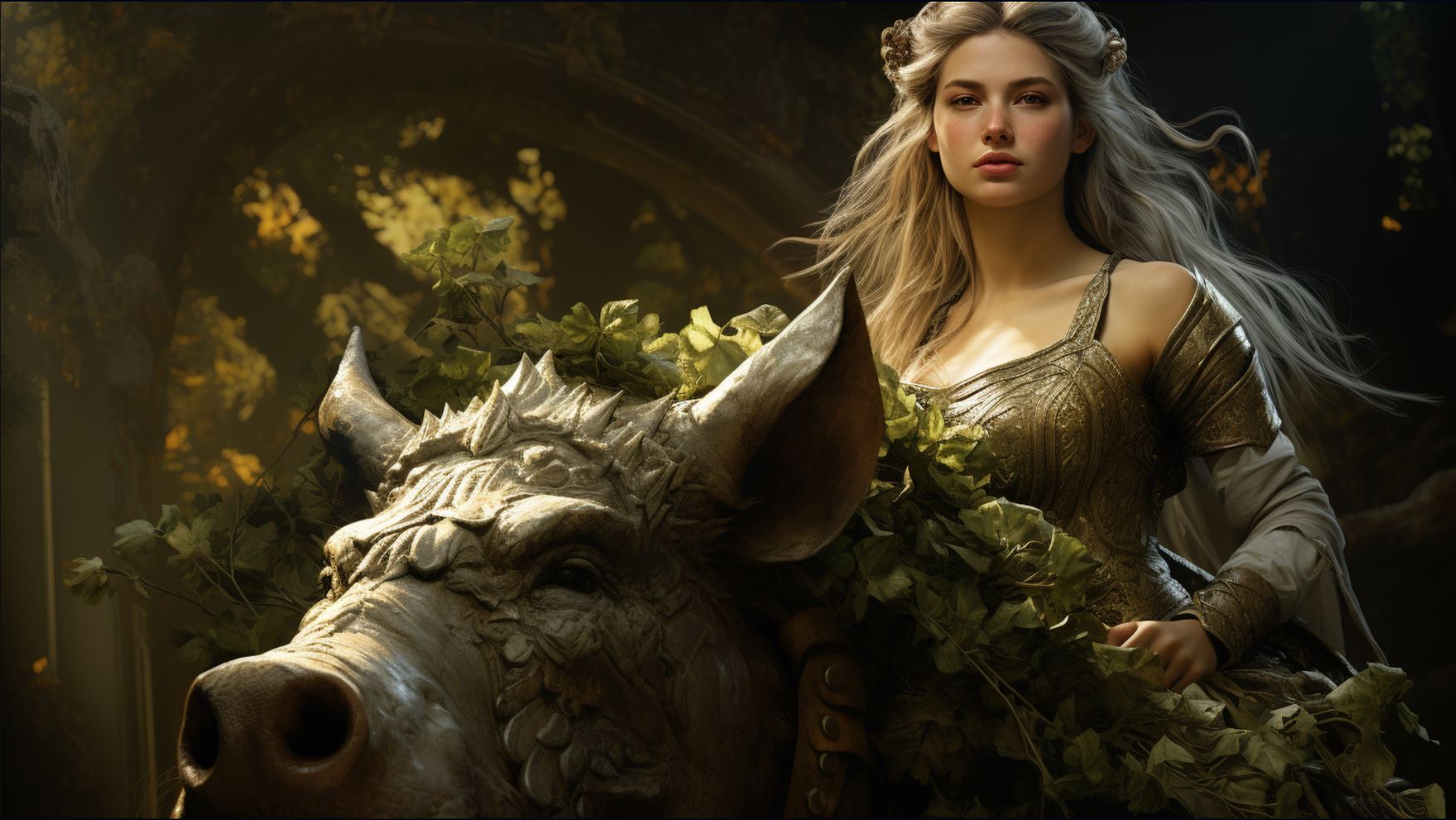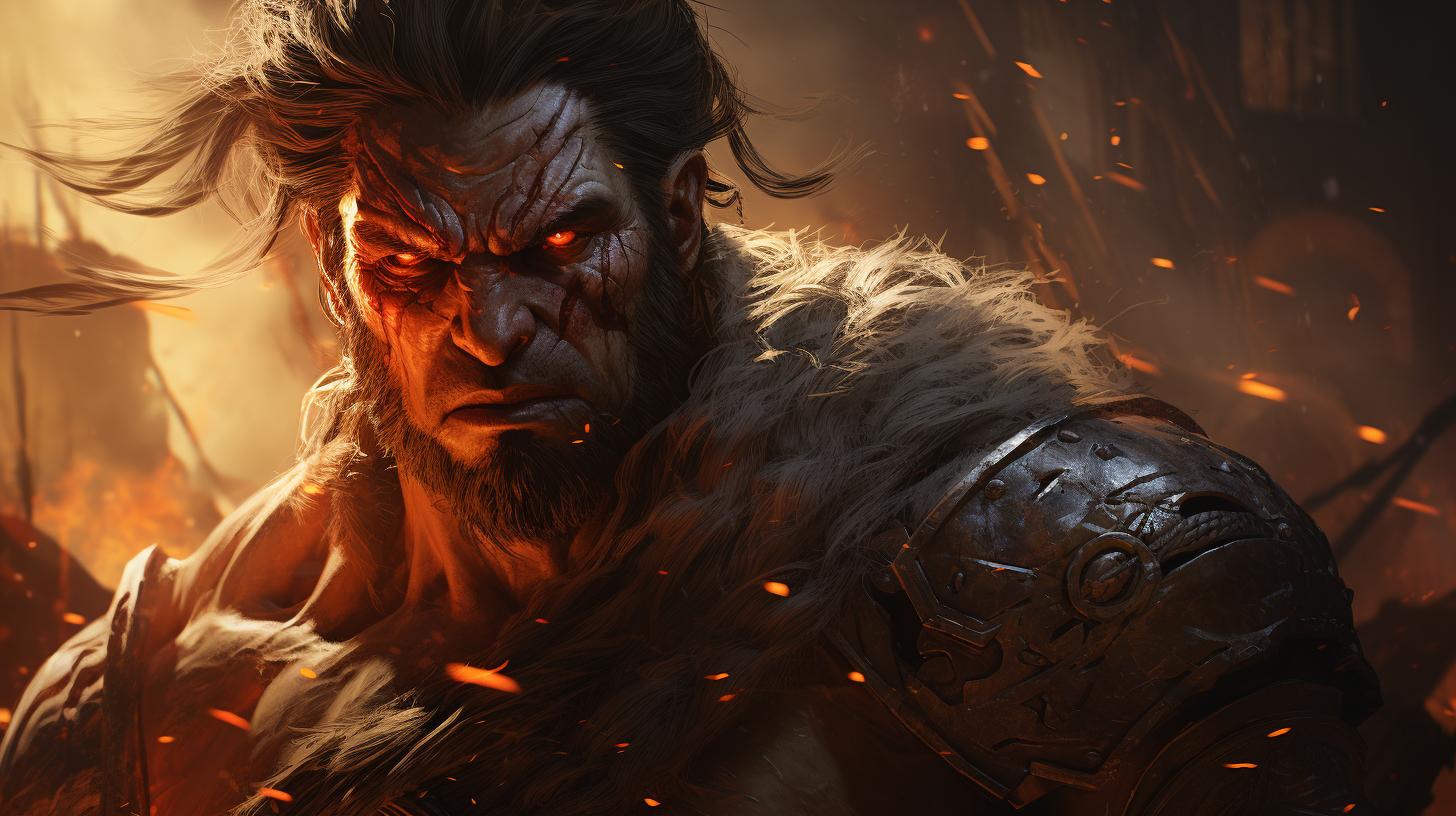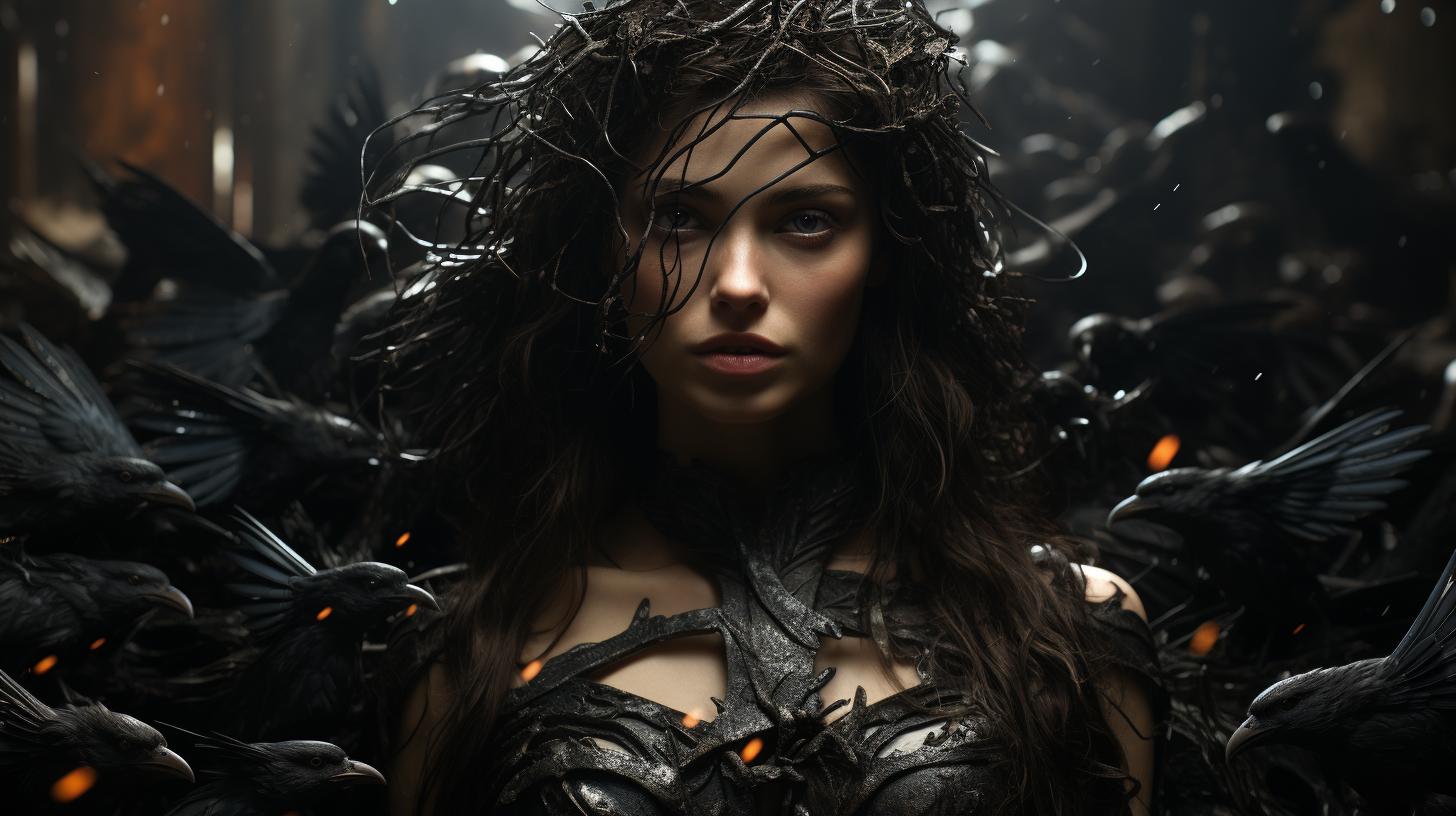Damona Goddess: Exploring the Celtic Healing Deity’s Power and Influence
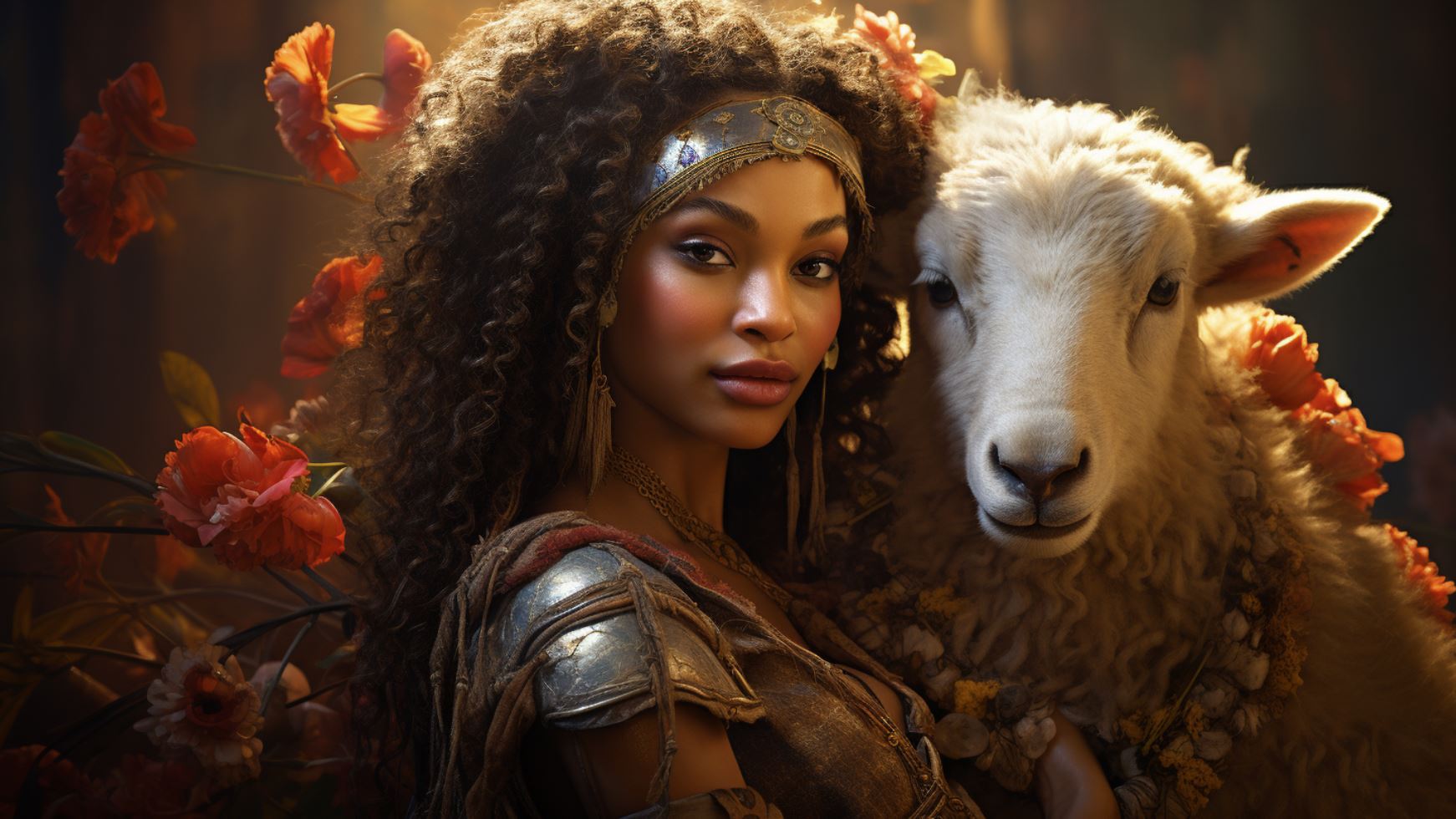
Damona Goddess, a prominent figure in Celtic mythology, holds a significant position as a symbol of healing and fertility. As a revered deity, Damona is associated with the well-being of animals, particularly sheep and cows.
Through her connection to sacred waters and warm springs, she embodies the power of rejuvenation and wellness. This article explores Damona’s origins, her role in ancient Celtic rituals, and her enduring influence in contemporary times.
From her sacred sites of worship to her depictions in popular culture, Damona’s legacy continues to shape beliefs and interpretations.
The Origins of Damona: Exploring the Celtic Goddess in Mythology
The mysterious and enigmatic Damona Goddess holds a significant place in Celtic mythology. Her presence and significance can be traced back through ancient texts and traditions, offering glimpses into the rich tapestry of Celtic beliefs.
Let us dive into the origins of Damona, unravel her role in Celtic mythology, and explore the profound meaning behind her name.
Damona Goddess: Who was She and What Did She Represent?
Damona, a revered figure in Celtic mythology, embodied various aspects of nature and fertility.
She was a powerful deity associated with healing, animals, and the sacred waters. Representing the health and well-being of domesticated creatures, particularly sheep and cows, Damona’s presence brought comfort and harmony to ancient Celtic communities.
The Role of Damona in Celtic Mythology: Connections and Associations
Within href=”https://oldworldgods.com/celtics/”>Celtic mythology, Damona connected humanity with the divine forces that governed the natural world. As a guardian of animals, she ensured their fertility and protection. Her association with sacred waters symbolized rejuvenation, demonstrating her role in promoting physical and spiritual healing among her worshippers.
Unveiling the Name: The Meaning and Significance of Damona
The name “Damona” holds deep symbolism within the Celtic culture. Derived from the Celtic word meaning “divine cow,” Damona’s name represents her connection to abundance, fertility, and prosperity. This divine association with cows aligns with the belief that cattle were a source of wealth and sustenance in ancient agricultural societies.
- Damona embodies various aspects of nature, fertility, and healing in Celtic mythology.
- She is particularly associated with the well-being of domestic animals, especially sheep and cows.
- Her name, derived from the Celtic word for “divine cow,” reflects her connection to abundance and prosperity.
- As a guardian of sacred waters, Damona signifies rejuvenation and promotes physical and spiritual healing.
Discovering the origins and symbolism of Damona provides valuable insight into the beliefs and traditions of the ancient Celtic civilization.
As we delve deeper into the worship and rituals associated with Damona, we gain a profound appreciation for her enduring legacy and the impact she has had on Celtic culture throughout history.
The Worship and Rituals of Damona: Ancient Practices and Traditions
The worship and rituals dedicated to Damona, the Celtic Goddess of healing and fertility, were an integral part of ancient Celtic society. This section explores the sacred sites and centers associated with Damona’s cult, the rituals and offerings performed in her honor, and her role as a goddess of health and connections to animals.
Places of Worship: Sacred Sites and Centers of Damona’s Cult
The ancient Celts held Damona in high regard and established various places of worship dedicated to her. These sacred sites and centers served as focal points for her devotees to gather and express their reverence.
Although specific details may vary, archaeological discoveries have provided fascinating insights into the locations where Damona was venerated.
One such notable site is Alise-Sainte-Reine, formerly known as Alesia. It was considered the center of Damona’s cult, where her followers would gather to offer their devotion and seek her blessings.
The discovery of a votive hole containing a carved stone head with corn stalks as a crown and snakes coiled around a hand is a testament to the sacredness associated with Damona.
Rituals and Offerings: The Devotion to Damona in Ancient Ceremonies
Ancient rituals and offerings played a crucial role in expressing devotion to Damona and seeking her favor for healing and fertility. These ceremonies were often conducted by priests or priestesses who acted as intermediaries between the mortal realm and the divine.
Rituals would typically include purification rites, invocations, prayers, and offerings to honor Damona. Offerings could range from simple gifts such as flowers, fruits, or grains to more elaborate sacrifices like animals or precious objects.
These acts of devotion were believed to strengthen the connection with the goddess and ensure her continued blessings upon the community.
Connections to Animals and Healing: Exploring Damona’s Role as a Goddess of Health
One of Damona’s prominent attributes was her association with the well-being of animals and healing.
As a goddess of health, she was believed to have the power to cure ailments and bless animals with vitality. This connection to animals extended to domesticated creatures, particularly sheep and cows, which were under her special care.
Ancient Celts would seek Damona’s assistance in ensuring the health and fertility of their livestock. They believed that by performing rituals and making offerings, they could invoke her protective and healing energy.
This deep connection between Damona and her animals showcases her role as a nurturer and guardian of the natural world.
The worship and rituals surrounding Damona’s cult offered a way for ancient Celts to express their reverence and seek her blessings.
These practices emphasized the importance of health and the interconnectedness of humans, animals, and the divine. In modern times, the legacy of Damona continues to inspire spiritual beliefs and interpretations, highlighting the enduring significance of this Celtic goddess of healing and fertility.
Damona in Modern Times: Contemporary Perspectives and Interpretations
In modern times, the ancient Celtic goddess Damona continues to captivate the imagination and inspire various forms of artistic expression. Her rich mythology and associations with healing and fertility have found their way into popular culture, leaving a lasting impact on books, art, and entertainment.
Damona in Popular Culture: References and Depictions in Books, Art, and Entertainment
References to Damona can be found in numerous literary works, where her character and attributes are utilized to create compelling narratives. Novels, poems, and even comic books often incorporate Damona as a symbol of natural healing and feminine power.
Artists have also drawn inspiration from Damona’s imagery, portraying her in paintings, sculptures, and other visual mediums. These artistic interpretations celebrate her role as a goddess of health and demonstrate how her legacy continues to influence contemporary creativity.
Revering Damona Today: Contemporary Practices and Spiritual Beliefs
Although the ancient Celtic religious practices have largely faded away, Damona still holds a special place in the spiritual beliefs of some individuals today. Modern practitioners and followers of Celtic-inspired traditions may honor Damona through rituals and ceremonies that focus on healing and connecting with nature.
These contemporary practices serve as a way to tap into the ancient wisdom and energy associated with Damona, seeking her blessing for physical and emotional well-being.
The Legacy of Damona: How Her Influence Continues to Shape Beliefs and Interpretations
Damona’s influence extends far beyond the realm of mythology and spirituality.
Her presence in modern times underscores the enduring power of ancient deities and their ability to shape our understanding of the world. As people continue to explore Damona’s symbolism and healing attributes, her legacy remains a testament to the timeless connection between humans, nature, and the divine.
.












